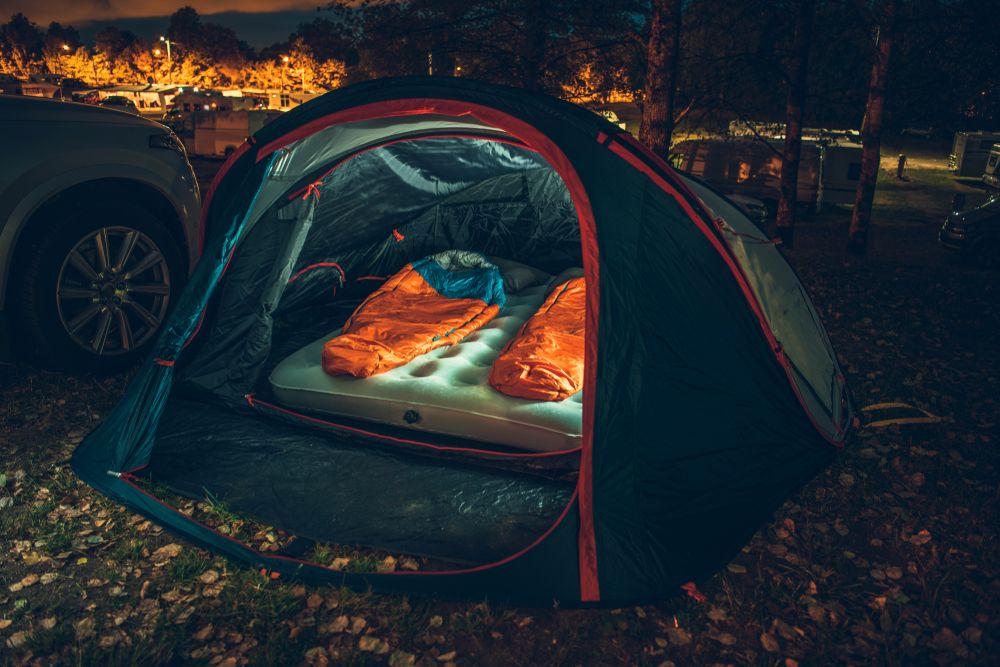Not all summer nights are warm, especially if you’re camping in the mountains or desert. Temperatures can drop drastically after sunset, leaving you shivering if your sleeping bag isn’t up to the task. Choosing the right sleeping bag for summer conditions—particularly cold nights—requires a mix of warmth, breathability, and comfort. Here’s everything you need to know.
Understand Temperature Ratings
Sleeping bags are labeled with temperature ratings, but these can be misleading without context.
-
Comfort Rating is the lowest temperature at which the bag will keep the average sleeper comfortable.
-
Limit Rating is the lowest temperature at which a warm sleeper will still be okay.
-
Extreme Rating is a survival metric—not for comfort, but for avoiding hypothermia.
For cold summer nights, look for a comfort rating between 30°F to 45°F. This range offers enough insulation for chilly mornings without being overkill for warmer weather.
Choose the Right Insulation Type
There are two main types of insulation to choose from: down and synthetic.
-
Down Insulation offers excellent warmth-to-weight ratio and compressibility. It’s ideal for backpackers or those needing ultralight gear. However, it loses insulating power when wet unless treated with a water-repellent finish.
-
Synthetic Insulation retains heat better when wet and usually costs less. It’s slightly bulkier and heavier but great for damp conditions or car camping.
If you expect dry weather and want a lightweight pack, go with down. For unpredictable climates or tighter budgets, synthetic is a smart bet.
Consider the Bag Shape
The shape of your sleeping bag affects warmth and comfort.
-
Mummy Bags taper toward the feet and hug the body. They retain heat well but may feel restrictive.
-
Rectangular Bags offer more space and ventilation but aren’t as thermally efficient.
-
Semi-Rectangular Bags strike a balance between space and insulation.
-
Double Bags are designed for two people, ideal for couples or sharing warmth.
For cold summer nights, mummy or semi-rectangular bags offer better insulation and warmth retention while still being usable in mild conditions.
Pay Attention to Fabric and Lining
Outer shell materials matter for durability and water resistance.
-
Nylon and polyester are common outer materials that provide durability and water resistance.
-
Ripstop fabrics add durability without much added weight.
-
DWR (durable water repellent) coatings help keep moisture out, a bonus on damp mornings or humid nights.
Inside, soft linings like brushed polyester or taffeta are gentle on the skin and help wick away moisture during warmer evenings.
Weight and Packability
Even if you’re not a backpacker, weight and size still matter. You don’t want to lug around an oversized, heavy bag if you’re only camping for a couple of nights.
-
For backpacking: Look for bags under 3 pounds that compress well.
-
For car camping: You can afford a heavier, roomier bag if you don’t need to carry it far.
Check the compressed packed size too. Bags with down insulation typically pack smaller than synthetic options.
Ventilation Features to Look For
Cold nights in summer are often followed by warmer mornings. Ventilation features let you adapt to changing conditions.
-
Two-way zippers allow you to unzip just the feet or torso for temperature control.
-
Zipper draft tubes help prevent heat loss.
ADVERTISEMENT -
Foot box vents allow you to cool off your feet without opening the entire bag.
Some bags even offer zip-off tops or quilt-style setups that give you more flexibility.
Check for Extra Comfort Features
A little comfort can make a big difference when you’re camping. Look for these features if you value a better night’s sleep:
-
Draft collars around the neck help trap body heat.
-
Pillow pockets or hooded tops keep your head cushioned and warm.
-
Internal stash pockets are perfect for storing headlamps, phones, or lip balm.
-
Anti-snag zippers reduce frustration in the dark.
While these may not seem essential, they contribute to a more restful and less stressful experience, especially in the middle of the night.
Match the Sleeping Bag to Your Sleep Style
Some people sleep hot, while others are cold no matter what. Think about your habits:
-
Cold sleepers should aim for a bag at least 10°F warmer than the lowest expected temperature.
-
Hot sleepers may want a more breathable design or one with venting options.
-
Side sleepers often feel restricted in mummy bags—consider semi-rectangular or wider cuts for flexibility.
The right bag isn’t just about insulation; it’s about matching your sleep preferences with the bag’s design.
Look for Summer-Specific Sleeping Bags
Not every summer bag is made for cold nights, so focus on models specifically designed for 3-season use.
-
These bags tend to use higher-quality insulation and have better temperature ratings than ultralight summer bags.
-
They still offer versatility—many 3-season bags can be used in spring, summer, and early fall with just small adjustments in layering.
Avoid ultrathin summer bags unless you’re camping in tropical or low-altitude areas where temperatures stay consistently warm.
Accessories That Can Make a Difference
Sometimes a simple accessory is all you need to boost the performance of your summer bag on cold nights.
-
Sleeping bag liners add 5–15°F of warmth and keep your bag cleaner.
-
Sleeping pads with high R-values insulate you from cold ground temperatures.
-
Compression sacks help reduce size during travel.
-
Waterproof stuff sacks keep your gear dry in wet conditions.
Liners and pads are particularly useful—they allow you to use a slightly lighter bag without sacrificing comfort or warmth.
Final Tips Before You Buy
-
Try before you buy if you can. Visit outdoor gear stores to test zipper length, interior space, and material feel.
-
Read customer reviews, especially those describing usage in cool summer weather or variable climates.
-
Invest in quality. A $150–$250 investment in a quality sleeping bag can last for years and adapt to different conditions.
The right summer sleeping bag isn’t just about surviving the night—it’s about sleeping well and waking up ready for adventure.





